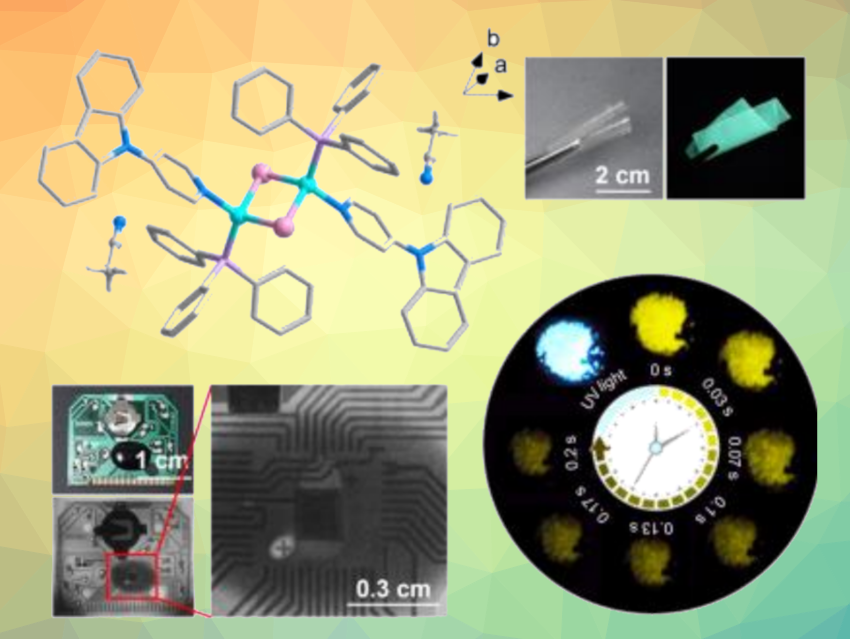Copper(I) iodine clusters can have useful photophysical properties such as a high luminescence efficiency and tunable luminescence lifetimes. Combined with high stability, low toxicity, and the relatively low cost of copper, this can make them promising for applications in, e.g., light-emitting diodes (LEDs) or optical sensors. The development of new copper(I) iodine clusters for optical applications is an interesting research target.
Kai Li, Yu-Bing Si, Shuang-Quan Zang, Zhengzhou University, China, and colleagues have synthesized an atomically precise copper(I) iodine cluster, [Cu2I2(Cz-Py)2(PPh3)2]·2CH3CN (Cz-Py = 9-(pyridin-4-yl)-9H-carbazole), which shows a unique afterglow emission, ultrahigh quantum yield, and aggregation-induced emission (AIE) behavior. The cluster also exhibits X-ray excited luminescence (XEL) properties, making it a promising X-ray scintillator. The team assembled single crystals of the copper(I) iodine cluster from the Cz-Py and PPh3 ligands as well as CuI under solvothermal conditions.
According to the researchers, the large spin-orbit coupling of the cluster leads to efficient phosphorescence emission, resulting in a remarkable afterglow. To demonstrate the potential for practical applications, they used the compound to create a flexible scintillator screen for high-resolution X-ray imaging.
- Afterglow Copper(I) Iodine Cluster Scintillator,
Ying-Nan Zhao, Qi Yang, Bo-Han Yao, Ruo-Yu Cao, Han Zhang, Shi-Long Wei, Dong-Hui Wei, Kai Li, Yu-Bing Si, Shuang-Quan Zang,
Angew. Chem. Int. Ed. 2025.
https://doi.org/10.1002/anie.202500481



